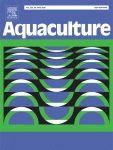What about the amount of protein added per day as a first step in understanding nitrogen availability? The amount of nitrate would be the daily left over. It is a big simplification, but a start to understanding more about the consumption rate.
Maybe, if there were a way to measure this. I have long argued that trying to measure is mostly a fools errand, but educating is better idea so that folks can see the big picture and apply it to what they are seeing in their tanks. Unfortunately, this has not worked. Too few want to do the work of even reading a few paragraphs about different nitrogen and phosphorous sources, the biology of what is of use vs what is a waste product, etc. Having a number from a worthless test is just too hard to overcome. Simple has ruled the day, which upsets me a bit. You see this every time somebody cuts back on feeding to get their no3 or po4 down not knowing that they are limiting available resources... or adds no3 and po4 to the backend to "feed" their corals when their corals.
Redfield is the same way. Even if there could be perfect ratio numbers, there is no way that we can test for the forms that really matters... so some will still care too much and others will realize that it is currently for naught. I could be convinced that a ratio of nitrogen to phosphorous might be helpful, but I see no use in measuring nitrate to phosphate ratios. Most will gravitate to the numbers without even realizing that they are near meaningless.





















